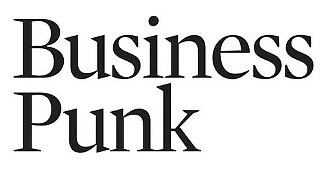Saturday 15 January 2022
Sustainable shipping boxes
The founding couple relies on green logistics
The founding couple behind Sendmepack want to make shipping packaging more sustainable. In the interview, the two tell how their model works, how much CO₂ can be avoided with it and whether this constellation sometimes leads to tensions.
Philip, together with Michelle you founded a company for more sustainable packaging solutions – what is behind it?
Philip Bondulich: In fact, seven years ago, when I was in charge of an online retailer that received negative reviews on Google because, for the sake of the environment, it sent its goods in used boxes. At the time I thought to myself: If he were to communicate this reason in the same way, most people would no longer have a problem with it.
You are not only business partners, but also life partners. Brief classification, please: is it going smoothly, or is it causing tension?
Michelle Reed: We just complement each other – both privately and professionally. Philips background as a graduate communication designer is a real advantage, especially when I have an idea and would like to have it implemented immediately. My strength lies in the area of sales: I have no problem calling people and getting them enthusiastic about our project.
That sounds like old school: Is cold calling still the best way to acquire customers?
Michelle: There are different ways. One is a warm intro, which often gets fulfillers approaching us because we’re doing something new that’s going to generate interest and word in the industry. Classic cold calling is of course also part of it!
Let’s get to your solution itself – how does the model that you have built at Sendmepack work?
Philip: Our employees have their own workplaces directly at the Fulfiller, where they prepare the shipping packaging. This means that the boxes are checked and processed before they receive an individual QR code and our label. When the recipients get their order, they can check the QR code in our app to see, among other things, which city the package was in.
Michelle: And also how much CO₂ was saved by using a Sendmepack. You can’t see these processes from the outside – so for the online shop we are primarily a provider of shipping packaging from which you can buy boxes of 20 or more. But we want to do more in the future. For example, closing the cycle for end customers by allowing them to hand in their packages to cooperation partners.
Can you give an approximate classification of how many boxes could be saved from fulfillment centers worldwide?
Michelle: Based on initial experience, we can estimate how much each partner incurs. But what we can ultimately salvage from this varies. In general, it can be said that around 90 percent of all boxes that were once in circulation can be used again.
Philip: And then you can calculate: In Germany alone there are four billion shipments per year. If you save 90 percent of that, that’s a lot of trees that wouldn’t need to be cut down to make new boxes.
How much CO₂ should be avoided with it? And which resources are also saved, what are the benefits?
Michelle: The production of a small box emits around 260 grams of CO₂, plus around four liters of water are needed per box. If you extrapolate that to 3.7 billion boxes, you get a sense of how many resources are being used. We add up all these parameters so that we can say in one year: We have saved millions of boxes, which corresponds to so many liters of water, wood and CO₂.
This interview is first at business punk appeared.
